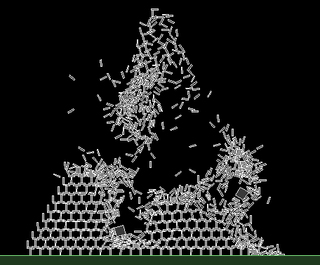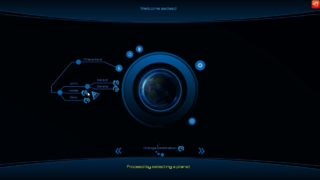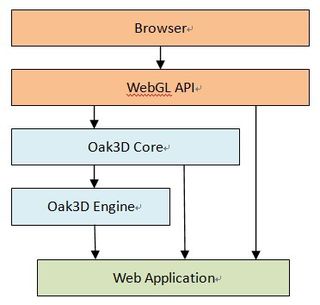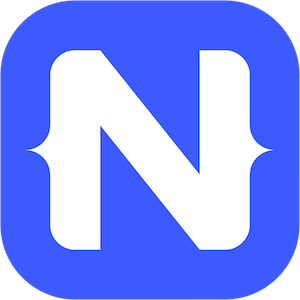This article does not cite any sources .(December 2008) (Learn how and when to remove this template message) |
 | |
 | |
| Developer(s) | sourceforge |
|---|---|
| Written in | C, C++ |
| Operating system | Cross-platform |
| Type | Middleware |
| License | Three clause BSD license |
| Website | www |
The Physics Abstraction Layer (PAL) is an open-source cross-platform physical simulation API abstraction system. It is similar to a physics engine wrapper, however it is far more flexible providing extended abilities. PAL is free software, released under the BSD license.

Open-source software (OSS) is a type of computer software in which source code is released under a license in which the copyright holder grants users the rights to study, change, and distribute the software to anyone and for any purpose. Open-source software may be developed in a collaborative public manner. Open-source software is a prominent example of open collaboration.

A physics engine is computer software that provides an approximate simulation of certain physical systems, such as rigid body dynamics, soft body dynamics, and fluid dynamics, of use in the domains of computer graphics, video games and film. Their main uses are in video games, in which case the simulations are in real-time. The term is sometimes used more generally to describe any software system for simulating physical phenomena, such as high-performance scientific simulation.
Contents
PAL is a high-level interface for low-level physics engines used in games, simulation systems, and other 3D applications. It supports a number of dynamic simulation methodologies, including rigid body, liquids, soft body, ragdoll, and vehicle dynamics. PAL features a simple C++ API and intuitive objects (e.g. Solids, Joints, Actuators, Sensors, and Materials). It also features COLLADA, Scythe Physics Editor, and XML-based file storage.
Dynamical simulation, in computational physics, is the simulation of systems of objects that are free to move, usually in three dimensions according to Newton's laws of dynamics, or approximations thereof. Dynamical simulation is used in computer animation to assist animators to produce realistic motion, in industrial design, and in video games. Body movement is calculated using time integration methods.

Rigid-body dynamics studies the movement of systems of interconnected bodies under the action of external forces. The assumption that the bodies are rigid, which means that they do not deform under the action of applied forces, simplifies the analysis by reducing the parameters that describe the configuration of the system to the translation and rotation of reference frames attached to each body. This excludes bodies that display fluid, highly elastic, and plastic behavior.

Computational fluid dynamics (CFD) is a branch of fluid mechanics that uses numerical analysis and data structures to analyze and solve problems that involve fluid flows. Computers are used to perform the calculations required to simulate the free-stream flow of the fluid, and the interaction of the fluid with surfaces defined by boundary conditions. With high-speed supercomputers, better solutions can be achieved, and are often required to solve the largest and most complex problems. Ongoing research yields software that improves the accuracy and speed of complex simulation scenarios such as transonic or turbulent flows. Initial validation of such software is typically performed using experimental apparatus such as wind tunnels. In addition, previously performed analytical or empirical analysis of a particular problem can be used for comparison. A final validation is often performed using full-scale testing, such as flight tests.
The Physics Abstraction Layer provides a number of benefits over directly using a physics engine:
- Flexibility – It allows developers to switch between different physics engines to see which engine provides their needs, as well as quickly testing a new engine.
- Portable – Developers are able to use the physics engine which provides the best performance for different platforms, and are able to write platform independent code.
- Security – If a middleware provider is acquired by another company or development is discontinued, developers can switch engines.
- Scalable – The abstraction layer allows developers to run their code on handheld console platforms up to supercomputers.
- Ease of use – Implementation details of the physics engine are abstracted, providing a cleaner interface to the developer.
- Benchmarking – Researchers can directly compare the performance of various dynamic simulations systems.
In software engineering, porting is the process of adapting software for the purpose of achieving some form of execution in a computing environment that is different from the one that a given program was originally designed for. The term is also used when software/hardware is changed to make them usable in different environments.
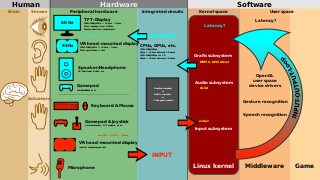
Middleware is computer software that provides services to software applications beyond those available from the operating system. It can be described as "software glue".

Scalability is the property of a system to handle a growing amount of work by adding resources to the system.
PAL is designed with a pluggable abstract factory allowing code to be written and compiled once and allowing runtime selection of different physics engines, as well as feature upgrades.
In computing, a plug-in is a software component that adds a specific feature to an existing computer program. When a program supports plug-ins, it enables customization.
